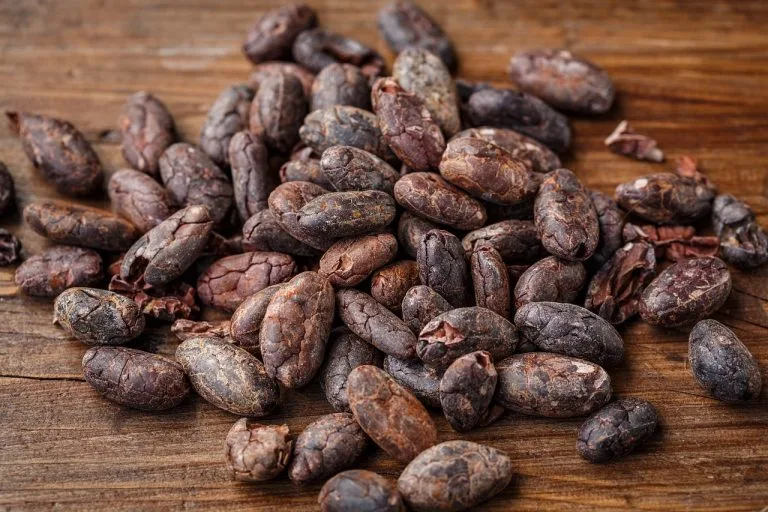Quick Summary
- Cocoa futures saw modest gains on Thursday, recovering slightly from recent lows driven by demand concerns and weather-related supply worries.
- Nigeria’s January cocoa exports surged 27% year-over-year, providing some limit to price increases.
- Tight global inventories and reduced production forecasts from major producers like Ghana continue to support prices.
- Concerns over slowing export pace from Ivory Coast and reduced demand from major chocolate manufacturers are key market factors.
- Quarterly grinding reports indicated a significant slowdown in cocoa consumption across Europe, Asia, and North America in Q4.
Market Performance and Key Influences
May ICE NY cocoa futures (CCK25) closed up 0.27% on Thursday, while May ICE London cocoa #7 futures (CAK25) saw a modest increase of 0.04%. These slight gains followed a significant downturn early in the week, attributed to concerns about cocoa demand and recent rainfall in key producing regions of Ivory Coast and Ghana.
📍 Nigeria, the world’s fifth-largest cocoa producer, reported a 27% year-over-year increase in January cocoa exports, reaching 46,970 metric tons. This news helped to cap further upside potential for cocoa prices.
⚡ A stronger U.S. dollar index (DXY00), which hit a one-week high on Thursday, also contributed to limiting cocoa price advancements.
Supply-Side Dynamics and Inventory Levels
Concerns regarding the pace of cocoa exports from Ivory Coast, the world’s largest producer, continue to provide support for prices. While initial data showed a 17% increase in cocoa shipped to ports for the current marketing year (October 1 to February 23), the growth rate has decelerated from the 35% rise seen in December.
📊 Global cocoa inventories remain tight, a bullish factor for prices. Although ICE-monitored cocoa inventories in U.S. ports had fallen to a 21-year low in late January, they have since recovered to a 2.5-month high. However, the overall trend of declining inventories over the past 1.5 years underscores persistent supply constraints.
📌 Smaller anticipated cocoa supplies from Ghana, the second-largest producer, are also bolstering prices. Ghana’s cocoa regulator, Cocobod, revised its 2024/25 harvest forecast downwards in December for the second time, now estimating 617,500 metric tons, a 5% decrease from the initial August estimate.
Demand-Side Pressures and Consumption Trends
The recent sharp decline in cocoa prices to 3.25-month lows on Monday was precipitated by warnings from major chocolate manufacturers regarding the impact of high prices on demand. Executives from Hershey and Mondelez have expressed concerns that elevated cocoa costs are beginning to curb consumer purchasing.
We are seeing signs, particularly in parts of the world like North America, where cocoa consumption is coming down, stated Mondelez CFO Zarmella on February 4. The company also cautioned that chocolate prices could increase by as much as 50%, further dampening demand.
⚡ Hershey executives indicated on February 6 that high cocoa prices are necessitating a reformulation of recipes, with the company exploring the use of alternative ingredients to reduce reliance on cocoa.
Impact of High Prices on Consumption
The effect of elevated cocoa prices on demand is evident in the fourth-quarter grinding reports. In January, the European Cocoa Association reported a 5.3% year-over-year decrease in Q4 European cocoa grindings, reaching the lowest level in over four years.
- Similarly, the Cocoa Association of Asia noted a 0.5% year-over-year decline in Q4 Asian cocoa grindings, also marking a four-year low.
- In North America, the National Confectioners Association reported a 1.2% year-over-year decrease in Q4 cocoa bean grindings.
Global Cocoa Deficit and Production Estimates
The International Cocoa Association (ICCO) has revised its global cocoa deficit estimate for 2023/24 upwards to 478,000 metric tons, an increase from the previously projected 462,000 metric tons. This represents the largest deficit recorded in over six decades.
The ICCO also lowered its 2023/24 cocoa production estimate to 4.380 million metric tons, down 13.1% year-over-year. Looking ahead, the ICCO projects a global cocoa stocks-to-grindings ratio of 27.0% for 2023/24, which is a 46-year low, further indicating a tight supply situation.
Expert Summary
Cocoa markets experienced slight recuperação on Thursday, attempting to rebound from recent lows driven by persistent supply concerns and mixed demand signals. While tight global inventories and reduced production forecasts offer underlying support, factors such as increased Nigerian exports and a strengthening dollar present headwinds. The market continues to closely monitor consumption trends, particularly in light of warnings from major chocolate manufacturers about the impact of high prices.

